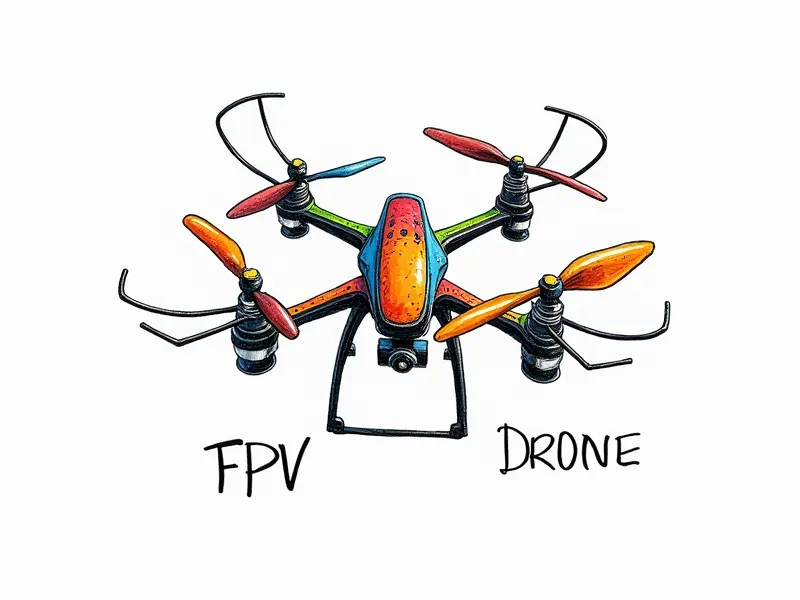Best FPV camera angles

Ultimate Guide to FPV Camera Setup
Welcome to the ultimate guide on setting up your first-person view (FPV) camera for racing drones. Whether you're a seasoned pilot or just starting out, understanding how to position and configure your FPV camera is crucial for achieving optimal performance and safety during races.
Mastering FPV Camera Placement for Racing
The placement of your FPV camera on the drone frame plays a significant role in determining the quality of your video feed and overall control experience. Proper positioning ensures that you have clear visibility, minimal lag, and reduced latency, which are essential factors for competitive racing.
Top FPV Camera Angles for Optimal Views
- Direct Nose Angle: Mounting the camera directly facing forward provides a straight-on view of your flight path. This angle is ideal for maintaining focus on the horizon and ensuring you stay aligned with the race course.
- Slightly Upward Tilt: Tilting the camera slightly upwards can help you see obstacles and terrain features ahead, giving you an advantage in navigating challenging courses.
- Nose Down Angle: A downward angle is useful for spotting ground-level hazards like rocks or uneven surfaces. This view helps prevent crashes and ensures smoother landings.
Achieving the Perfect FPV Camera View
To achieve a perfect FPV camera view, consider the following factors:
- Field of View (FOV): A wider FOV provides more context and helps you see your surroundings better. However, it may introduce distortion at the edges.
- Lens Quality: Using high-quality lenses can reduce image noise and improve clarity, especially in low-light conditions.
- Mounting Stability: Ensure that your camera is securely mounted to prevent vibrations from affecting video quality.
Maximize Your FPV Experience with Perfect Angles
The right angle can make or break your FPV experience. Experiment with different angles to find the one that suits your flying style and race conditions best:
- Narrow Angle for Precision: A narrow FOV is great for precise maneuvers, offering a focused view of your immediate surroundings.
- Broad Angle for Context: A broad angle provides a wider field of vision, which can be beneficial in open spaces where you need to see more ground coverage.
Essential FPV Camera Position Tips
Here are some essential tips to keep in mind when positioning your FPV camera:
- Adjust for Wind Resistance: Ensure that the camera is positioned to minimize wind resistance, which can affect flight stability.
- Battery Placement: Properly placing the battery can help balance the drone and reduce vibrations transmitted to the camera.
- Antenna Positioning: Position your antenna correctly to avoid interference with the video signal.
Best Practices for FPV Camera Orientation
Adhering to best practices can significantly enhance your FPV setup:
- Calibrate Your Goggles: Ensure that your goggles are properly calibrated with the camera for a seamless viewing experience.
- Use High-Quality Cables: Employ high-quality cables to transmit video signals without degradation or lag.
- Regular Maintenance: Regularly clean and inspect your camera and accessories to maintain optimal performance.
FPV Drone Camera Angle Tips & Tricks
Here are some advanced tips for fine-tuning your FPV drone setup:
- Custom Mounts: Consider custom mounts or brackets that allow you to adjust the camera angle on-the-fly.
- Dual Cameras: Some pilots use dual cameras with different angles and FOVs for redundancy and versatility.
- Lighting Conditions: Adjust your camera settings based on lighting conditions to optimize image quality.
Optimal FPV Camera Placement Guide
To achieve optimal placement, follow this step-by-step guide:
- Initial Setup: Start by mounting the camera directly facing forward for a baseline view.
- Trial and Error: Experiment with slight adjustments to find the angle that feels most comfortable and provides the best visibility.
- Feedback Loop: Continuously refine your setup based on feedback from test flights and races.
Perfect Your FPV Viewing Experience
To perfect your FPV viewing experience, focus on these key areas:
- User Comfort: Ensure that you are comfortable while wearing goggles or using a monitor for extended periods.
- Video Quality: Strive to maintain the highest possible video quality by optimizing camera settings and equipment.
- Control Precision: Fine-tune your control inputs to match the responsiveness of your FPV setup, enhancing overall performance.
Ultimate FPV Angle Cheat Sheet
Here’s a quick reference guide for common FPV camera angles and their benefits:
| Angle Type | Description | Benefits |
|---|---|---|
| Nose Direct | Camera facing straight ahead. | Clear view of the flight path; ideal for racing. |
| Slightly Upward Tilt | Tilt slightly upwards to see terrain features. | Better visibility of obstacles and terrain. |
| Nose Down Angle | Camera tilted downwards for ground-level views. | Helpful in spotting hazards and aiding landings. |
Conclusion
Mastery of FPV camera angles is essential for any drone racer or enthusiast. By following the tips and guidelines outlined above, you can optimize your setup to enhance visibility, control, and overall performance. Experimentation and continuous refinement will help you find the perfect angle that suits your flying style and race conditions best.

